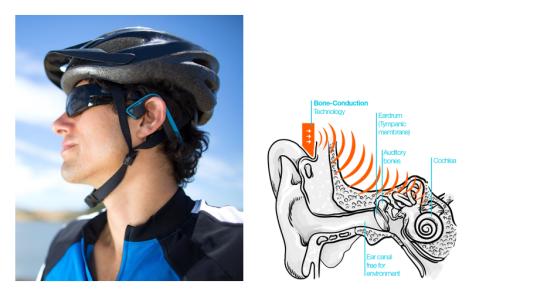Bone conduction technology was first introduced for hearing aids and military communications purposes. Because the sound can be conducted to the inner ear through the bones of the skull. This means that sound waves bypass the outer ear and middle ear (where the eardrum is located) and directly stimulate the inner ear (hearing organ).

Due to the growing demand for bone conduction earphones in countries such as China, India and Japan, the Asia-Pacific region is expected to become a major market during the forecast period. The low-cost bone conduction earphones provided by regional manufacturers are having a positive impact on market growth. In addition, manufacturers of affordable bone conduction headsets compete in a byte-leading manner to stay competitive, which also promotes market growth in the region. Increasing competition among third-party e-commerce channels (backed by a large amount of venture capital) is another key factor driving industry growth.
In 2018, the global bone conduction headset market increased from 31.94 million U.S. dollars in 2014 to 160.34 million U.S. dollars, and will reach 939.06 million U.S. dollars by 2025, with a compound annual growth rate of 27.19% between 2019 and 2025. .
The rapidly growing markets for bone conduction headsets in these regions from 2014 to 2025 include:
North America (United States, Canada and Mexico)
Europe (Germany, Britain, France, Italy, Russia and Turkey etc.)
Asia Pacific (China, Japan, Korea, India, Taiwan)
Central and South America (Brazil, etc.)
Middle East and Africa (Saudi Arabia, UAE, Egypt, Nigeria, South Africa)
Shenzhen WinTo Technology Co., ltd, as a professional manufacturer of bone conduction headphones, will continue to develop premium products with top quality for users.
